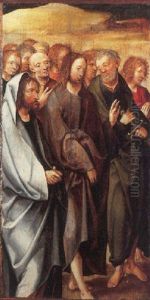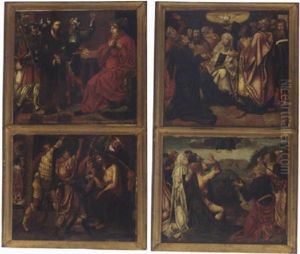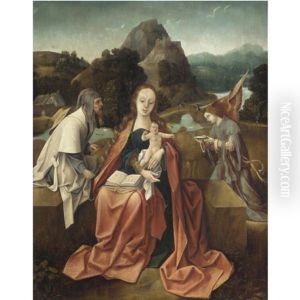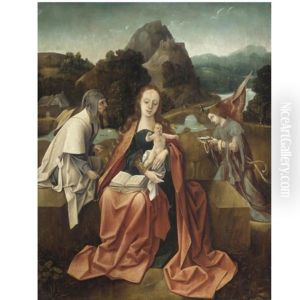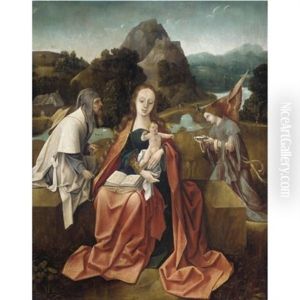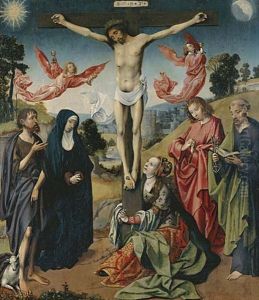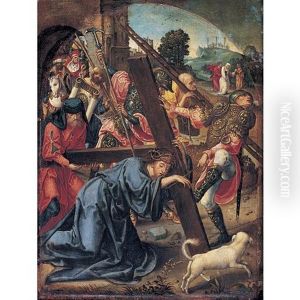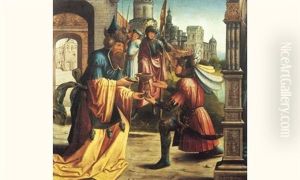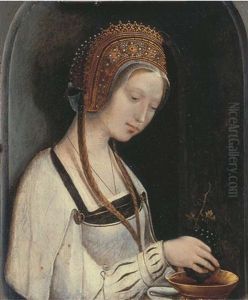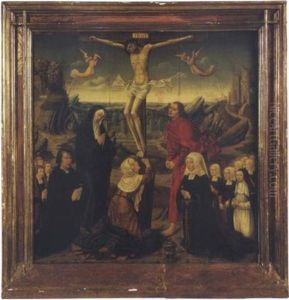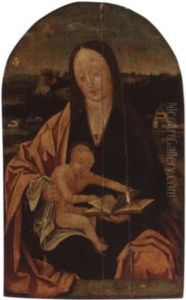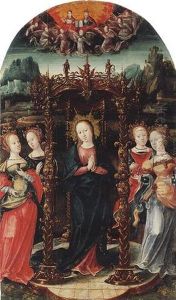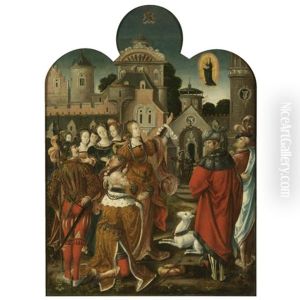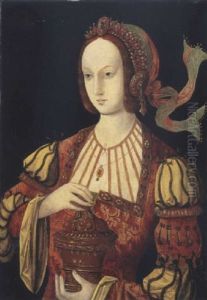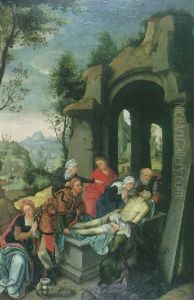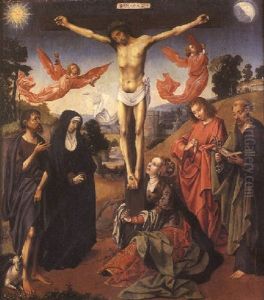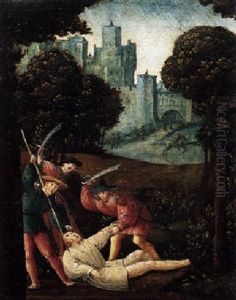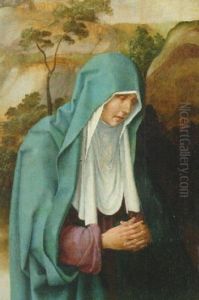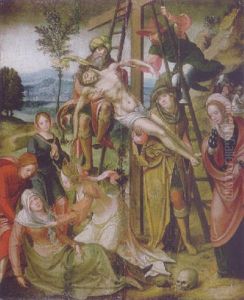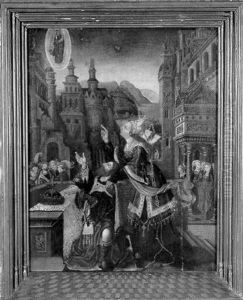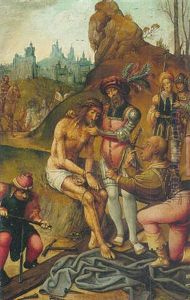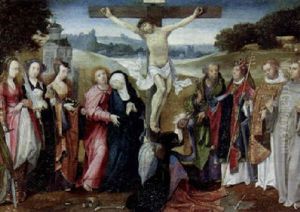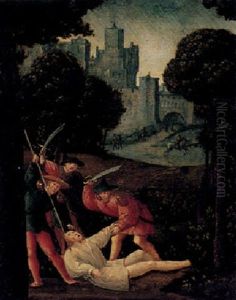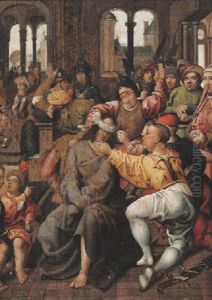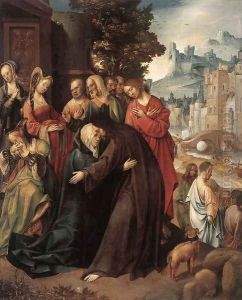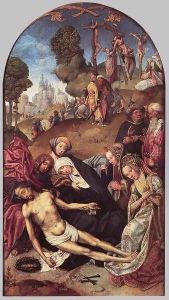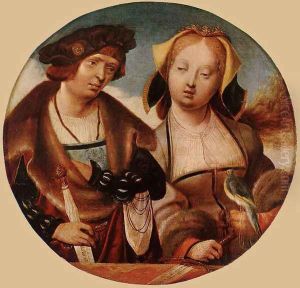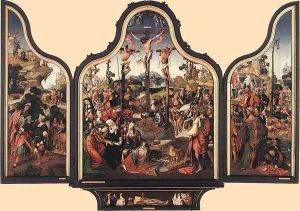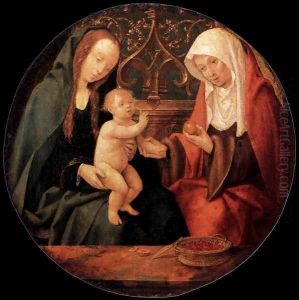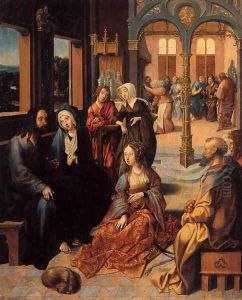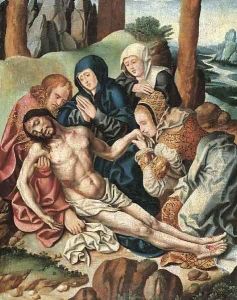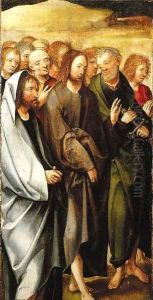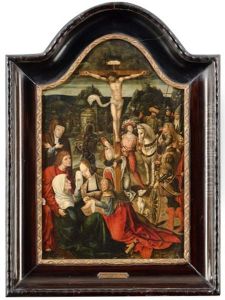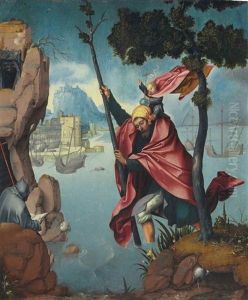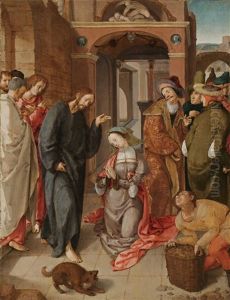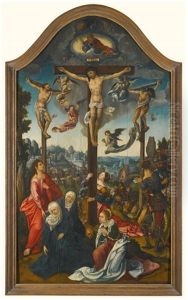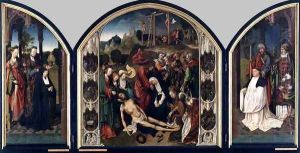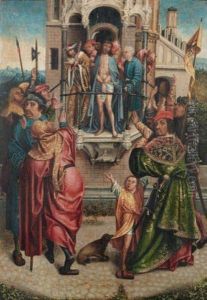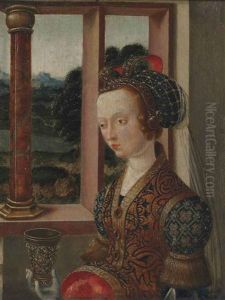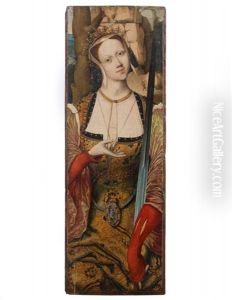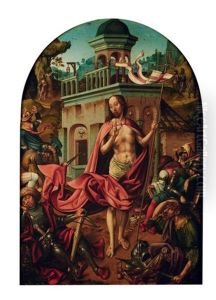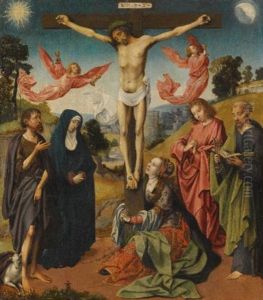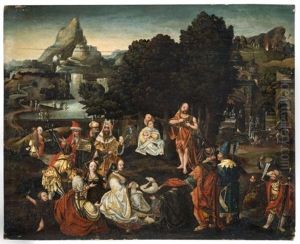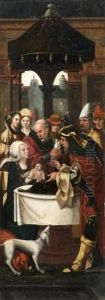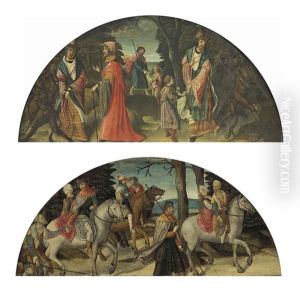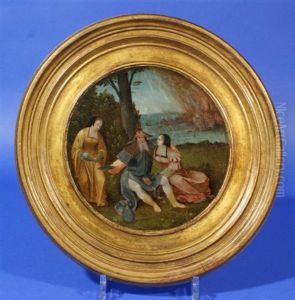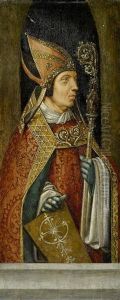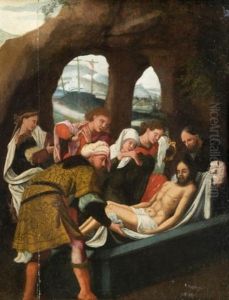Cornelius Engebrechtsz Paintings
Cornelius Engebrechtsz. was a significant Dutch painter from Leiden, one of the earliest painters from the Northern Netherlands who showed an Italian influence in his work. Born around 1462 in Leiden, he was one of the first Northern artists to demonstrate the impact of the Italian Renaissance in his paintings, which was a result of the increased interactions between the Italian states and the Northern regions of Europe during this period.
Engebrechtsz. was trained in his hometown and possibly in Utrecht, and he may have visited Italy, although there is no concrete evidence to confirm this travel. Nevertheless, his work displays a clear Italian influence, particularly from the Florentine school. He is known to have run a large workshop in Leiden and had a considerable number of pupils, including the famous Lucas van Leyden, who would become one of the leading figures in Dutch Renaissance art.
The artist's work typically includes religious themes, such as altarpieces and triptychs, which were common among artists of his time. His style is characterized by expressive figures, detailed landscapes, and the use of vivid colors, which were all innovative at the time in the Northern regions. Engebrechtsz.'s use of light and shadow also shows an understanding of the Italian techniques of chiaroscuro, although his interpretation is considered to be less subtle than that of his Italian contemporaries.
Despite his importance in the early Dutch Renaissance, much of Engebrechtsz.'s work has not survived to the present day. Some of his paintings have been lost or destroyed over the centuries, and others have been attributed to his pupils or contemporaries instead. Nevertheless, the works that are securely attributed to him, such as 'The Christ’s Mocking' triptych in the Museum De Lakenhal in Leiden, help to secure his place in art history as a pioneer of Northern Renaissance art.
Cornelius Engebrechtsz. died in 1527 in Leiden. His legacy lives on through the works of his pupils and the influence he had in introducing Renaissance ideals and techniques to the art of the Northern Netherlands. His contribution to the development of Dutch art is significant, bridging the gap between the late Gothic style and the new Renaissance mode of expression.
